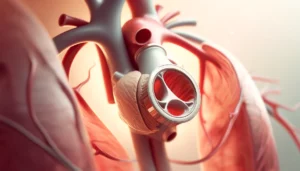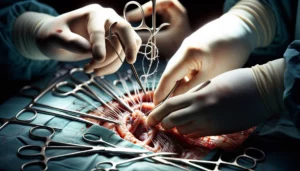
First Experiences with Automated Annular Suturing Device in Totally Endoscopic Aortic and Mitral Valve Replacement
This study investigates the early clinical outcomes of using an automated annular suturing device, the RAM® device, in endoscopic minimally invasive aortic and mitral valve replacement surgeries. Conducted between September 2020 and June 2023, the study involved 66 patients with an average age of 61.8 years. The results showed no intraoperative complications, no paravalvular leaks, and zero 30-day and in-hospital mortality, indicating the procedure’s safety and effectiveness. Larger studies are recommended to further evaluate the device’s efficacy.










